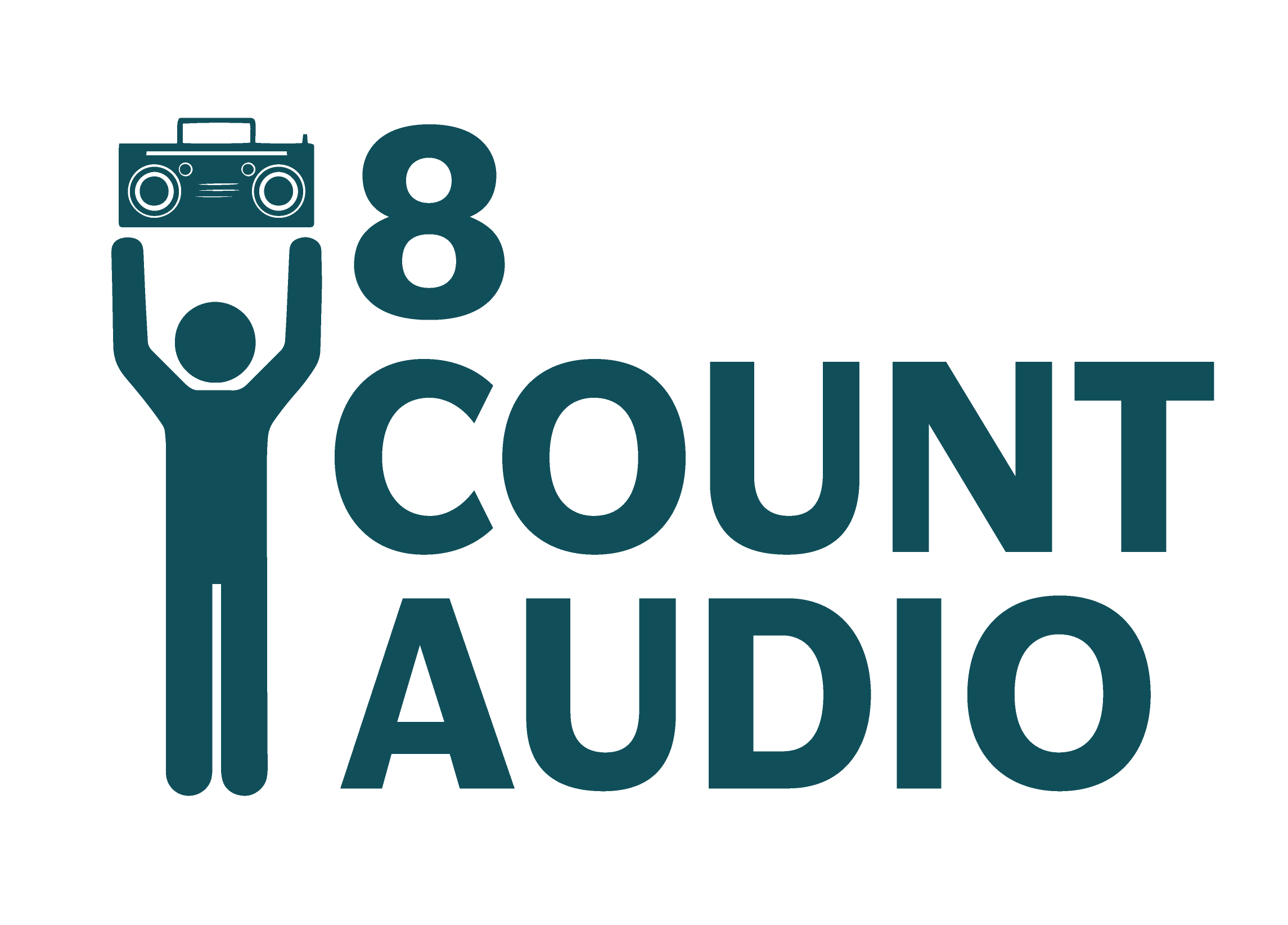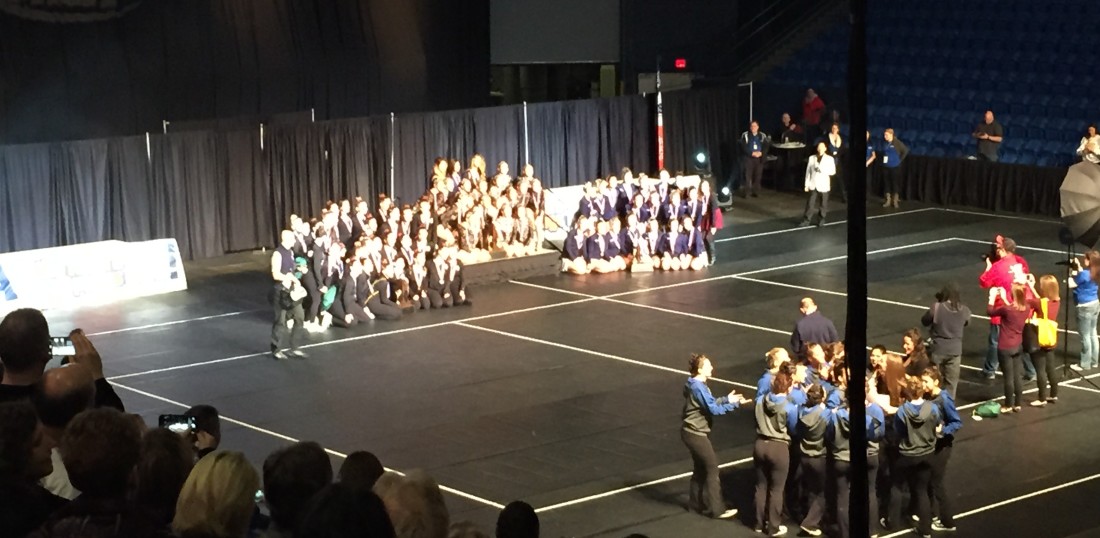What if IHSA State 2016 Had Categories?
by Norm Ramil, 8 Count Audio creative.director / chief.music.officer / dance.fan
Let’s throw it back to the days when your team’s dance was judged versus other dances of the same style. Category-based competition makes up the bulk of Illinois’ competitive dance history, and most of the awards found in school trophy cases around the state reflect this.
These lists won’t perfectly replace category competition, but it’s the closest we can get based on the results available. It’s an honest estimation using the placements from both days at IHSA state ’16. These are the highest scoring dances of each style of dance using Day 2 results and Day 1 placements if needed. Obviously the scores were given in the “open” judging system of no categories, but the same panel saw all 1A, 2A, and 3A dances in one block.
The goal is to see what category competition might have looked like and to recognize the achievements of teams performing their style of dance at state.
It doesn’t take anything away from the top 3 finishers and their IHSA trophies. This analysis keeps them as the champions of their unofficial category, plus as the overall “grand champions” that TDI used to designate at state. The goal is to see what category competition might have looked like and to recognize the achievements of teams performing their style of dance at state. Plus it ups the chances for a team to earn an unofficial title.
For shorthand, let’s just call these the “unofficial categories” of pom, kick, hip hop, and jazz-lyrical.
One last disclaimer–we used to have an “open dance” category as a catch-all term for routines that included jazz, contemporary, and other styles that are sometimes hard to define precisely. And we’ve all seen dances that blur the line between lyrical and jazz, often depending on your point of view. I’ve gone with 2 approaches below: first, a mega-category of jazz/dance/lyrical, and second, splitting this up into a lyrical group and a jazz/open-dance group. Sometimes it’s debatable where a routine belongs, but hopefully splitting it up creates more chances for teams to gain an unofficial trophy!
1A Unofficial Category Winners
Hip hop dances account for 4 of the 30 1A routines, and 2 of these made it to Day 2. An unofficial hip hop category would have Villa Grove as the 1A champions with Johnsburg in 2nd and Unity in 3rd.
Just one kick routine took the stage in 1A, making Streator the unofficial 1A kick champions.
Pom routines accounted for 8 dances in 1A. Just one of these moved on to Day 2, making Montini the 1A pom champs, unofficially. 2nd would go to Wesclin, 3rd to Quincy Notre Dame.
Like their 2A and 3A counterparts, 1A’s heavyweight unofficial category is lyrical-jazz-contemporary. Highland is the overall 1A champion and so their lyrical dance would be 1st place in this broad category, with Morris 2nd and Sycamore 3rd. Of course, this mirrors the overall 1A ranking, so let’s break things down further.
If you look at just the dances that are clearly lyrical in style, that category’s top 3 would go Highland, Sycamore, and Mahomet-Seymour.
If there was something like TDI’s old “Open Dance” category, or what IDTA used to call just the “Dance” category and currently the “Jazz” category, that style’s champion would be Morris. Auroral Central Catholic would take 2nd, and IC Catholic in 3rd.
2A Unofficial Category Winners
Geneva just racked up their 3rd straight 2A championship (the only other 2A champion is IHSA history was Crystal Lake Central (in 2013). By default, this also means that if there were categories, Geneva would be the 2A lyrical champs. The other top finishers? If you lump jazz, lyrical, and contemporary styles together, then Wauconda earned the 2nd place lyrical title, followed by Libertyville in 3rd. Altogether, the judges saw 14 routines in this mega-category.
If you break this down into the traditional categories of “lyrical” and “jazz/open dance,” the results are slightly different. Geneva would be the lyrical champions, Wauconda in 2nd, and Antioch with a 3rd place lyrical ranking.
A jazz/open dance category would have Libertyville as the champions, Vernon Hills in 2nd place, and Tinley Park in 3rd.
Lakes was the sole kick routine, making them the unofficial 2A kick champs.
Hip hop was very competitive with 9 dances—4 of these made it to Day 2. Lake Zurich, 2nd overall in 2A, would be the hip hop champions, followed by Deerfield in 2nd and Lincoln Way West in 3rd.
Crystal Lake Central takes top honors as the unofficial 2A pom champions, and this dance program was no stranger to pom supremacy in IDTA and TDI competition—plus the aforementioned 2013 overall 2A title. Right behind them are fellow 2A pom specialists Oak Forest, with Crystal Lake South in 3rd.
3A Unofficial Category Winners
3A’s pom situation is wildly different from 2A’s. Just 2 pom routines appeared at state in 3A competition, and if had its own category, Fremd would be the 3A champs and Glenbrook South in 2nd.
With the sole hip hop routine, Warren would take that category’s championship. Warren had a great weekend in Bloomington, finishing 5th overall on both days.
And now for the chaos. 28 of the 31 dances in 3A were either lyrical, jazz, or contemporary. This huge group is led by overall 3A champions Neuqua Valley, followed by Stevenson and South Elgin. This mirrors the actual 3A top 3, so let’s see what happens when you use the old category system.
If you only look at routines that are overtly lyrical, then the 3A lyrical champ is South Elgin, followed by 2nd place Waubonsie Valley and 3rd place Wheaton Warrenville South.
If you group just the jazz and contemporary dances together, then you would have Neuqua Valley as the 3A jazz champion, followed by Stevenson in 2nd and Barrington in 3rd.
Close enough?
Supporters of the “open,” non-category system might be tempted to say that these unofficial category rankings closely match the overall rankings in 3A, 2A, and 1A, and therefore there’s no need for categories…IHSA got it close enough.
But that ignores the factor that these top 30 routines (31 in 3A) in each division represent the top 6 from each sectional, not the top scoring routines of each style of dance. Instead of just 1 hip hop routine, you might have seen, say, 5 quality hip hop dances in Bloomington in 3A, just as an example.
The next point that IHSA would probably make is that there aren’t 5 quality 3A hip hop routines out there. But if you think back to TDI’s system and IDTA’s format, their state competitions let teams bring more than 1 routine. Just as an example, this scenario might have seen Huntley bringing their quality hip hop dance to go along with their lyrical routine.
And on to the next point that IHSA might make: there aren’t enough hip hop 3A teams out there to justify a category. The reply to this is that teams see the scoring trends and are putting all their efforts into lyrical and jazz routines as their best chance to get into the top 6 in a very flawed sectional system. Restore the categories, go back to a minimum score-based qualifying system, and you’d likely see teams crafting multiple high-quality hip hop, kick, and pom routines—enough to fill 5 or more spots in each category.
In the meantime, we’ve got our overall champions, the top 3 trophy finalists, and the top 10 teams who got to dance on Day 2. It’s just important to give the spotlight to the teams who committed to a certain style of dance, earned points, and outscored other teams in that style. It’s one thing to say you got a hard-fought 5th place finish in the finals, but I think fans and dancers would rather think of their achievement as the highest-placing, highest-scoring pom routine in the state. That’s a mouthful to fit on a banner on the gym wall. How about just calling them “Pom–1st in state?”
There are more champions out there than the official results show. Unofficial category placements are just a small way to properly highlight the hard work of Illinois’ dance teams. If I were an AD, I’d go ahead and call the painters to add a banner that more specifically reflects what my dance team achieved at state.
For the moment, all we have are these shout-outs.


